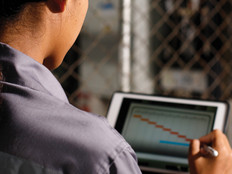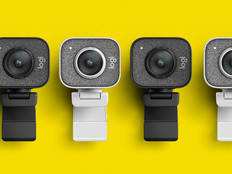Making the Call on Mobile Device Management: What Should Schools Be Asking?
From virtual trips with augmented reality to 3D printers for project-based learning and one-to-one device policies that empower student-driven research, new technologies can help bridge the gap between rote learning and long-term retention.
But there’s a big challenge that all education IT leaders face: Managing smartphones, laptops and other connected devices securely and at scale. To help tackle this tech issue, and ensure these devices don’t become distractions, many schools are turning to mobile device management. But how should they make the call when it comes to picking the right MDM solution?
MORE FROM EDTECH: K–12 schools need strong mobile device management services.
Mobile Device Management Basics for Schools
MDM platforms for schools provide control over students’ and teachers’ devices to ensure consistent, responsible use that aligns with existing conduct and IT policies. Says John Mutter, distinguished engineer and CTO of IBM’s Mobile Practice Worldwide, while the mobile device management market is an “alphabet soup” of associated acronyms — MDM, UEM, MAM and EMM, to name a few — they’re all defined by common mobile application programming interfaces, or APIs.
For Mutter, this means that “no one vendor has the advantage. There is no ‘secret list’ of APIs.” For schools, this convergence of basic functions means that mobile device management for education isn’t about selecting the “best” vendor — it’s about identifying the features and functions you need and finding a market match. Narrow your search by working through the basics: who, what, where and when.
Here are four questions you need to ask about MDM before deploying this solution at scale.
Who Owns the Device: Students or Schools?
While one-to-one device programs are ramping up, thanks to affordable technologies such as Chromebooks, and shared classroom AR/VR experiences are becoming more common, schools can’t ignore the rising tide of student-owned smartphones.
According to NPR, 53 percent of U.S. students now own a smartphone by age 11. Bans on mobile device use in schools are rapidly falling, and school districts are starting to draft BYOD policies that manage smartphone use.
This matters for MDM. With schools no longer in direct control of most devices on their networks, Mutter recommends looking for tools that include “mandated passwords to protect credentials, scheduled password changes, specific password complexity and encryption ability” to help handle BYOD in schools.
MORE FROM EDTECH: How technology can improve digital citizenship in K–12.
What Features Do IT Teams Want in MDM?
Network complexity, the number of connected devices and the size of IT teams will impact the feature set schools need to prioritize in their MDM deployments. For example, some vendors provide self-service websites that allow IT admins to granularly control MDM policies.
Others focus more on reports and analytics to help organizations identify key mobile trends and take corrective action. Mutter suggests several other distinguishing features that should be considered: • Per-application management — Apps can be individually deployed and managed on any network-connected device.
- Single-sign on — Access management is critical to ensure student privacy and network security. Some MDM providers offer SSO integration to streamline this process.
- Geolocation services — If school- or student-owned devices go missing, geolocation services can help track them down.
- Virtual private networks — Adding the extra layer of VPNs to MDM for schools can help reduce the risk of accidental data disclosure.
Where Are Devices Used on Campus?
If devices are school-owned, they’re typically stored in a central, secure location when not in use. Student-owned devices go everywhere, from first-period math to recess to lunch to libraries and assemblies. For Mutter, this demands the ability to “control the experience that’s delivered in the classroom” — and beyond. According to Nicola Johnson, associate professor of digital technologies in education at Edith Cowan University, recent research into school device use found that students were often engaged with devices, but not with content that facilitated learning.
Schools need MDM tools capable of assigning acceptable use conditions and tracking attempts to circumvent IT policies. Educational IT teams also need the ability to manage devices when they leave local networks, says Mutter — for example, geolocation services can curtail network access when students are off campus, while self-service web portals make it possible for IT admins to immediately revoke device privileges when students graduate.
When Problems Arise, What’s the Policy?
Policies outline acceptable behavior, but what happens if students or staff don’t follow the rules? “Mature organizations provide an acceptable-use policy in writing with clear terms and expectations,” says Mutter.
MDM solutions for schools help enforce these expectations; if students don’t follow the rules, IT staff can issue warnings, suspend current sessions or remove specific permissions. By drafting good policy, communicating expectations clearly and having the digital walk to back the BYOD talk, schools can handle problems on demand and on a per-device basis.








